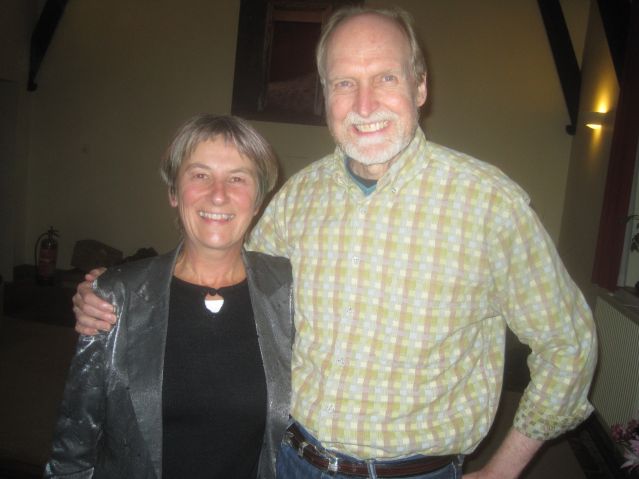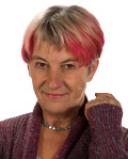Attention
The First Jhana
First steps from concentration to ‘rapture and pleasure’
Posted October 2, 2014

I have described how I came to attend a jhanas retreat with Leigh Brasington, and how I learned to focus attention narrowly and firmly on my breath entering and leaving my nose. Now it was time to build up ‘access concentration’. This, he said, was most important because the depth of access concentration determines how stable the jhanas will be. In his daily lectures he described what lay ahead, based on his own experience with his teacher Ayya Khema. These are teachings based on the early suttas and are different from the jhana practice taught by Pa Auk Sayadaw that is based on later traditions. Having studied the entire Pali Canon, Leigh had many fascinating stories to tell while he led us through how the suttas describe each of the eight jhanas.
The general idea is that the jhanas are states of meditation that are free from the five hindrances – that is, craving, aversion, sloth, agitation and doubt – and increasingly free from discursive thinking, leading to a state of full-body non-dual awareness.
The first jhana, (J1), describes a monk, quite secluded from sensuality and unskilful qualities, who enters and remains in the first jhana. He experiences “rapture and pleasure born from withdrawal, accompanied by directed thought and evaluation. He permeates and pervades, suffuses and fills this very body with the rapture and pleasure born from withdrawal. There is nothing of his entire body unpervaded by rapture and pleasure.” To this Leigh added descriptions of joy, bliss and other positive states, all saturating the entire body.
This all sounded ridiculously delightful, and slightly unconvincing. How could we possibly enter ‘rapture and pleasure’ at will? But Leigh, in his down-to-earth way, simply told us what to do. He said that if we followed these instructions we would experience the upwelling of a kind of energy called piti, marked by visual phenomena such as white light or coloured floating blobs, shaking of the whole body or of just parts, and rushes of energy. I couldn’t really believe I would experience any of these, and feared I might just imagine the symptoms and never know whether they were due to piti or not – if there is such a thing. Nevertheless, I threw myself into the practice and tried to do exactly as he said.
We began each sitting period with gratitude, planning the session, building up motivation and metta, and then practiced Thich Nhat Hanh’s ‘Breathing in, I calm body and mind; breathing out, I smile’. From there, still smiling, we were to build access concentration by focussing on the sensation of breath passing through our nostrils – nothing else, not
the rise and fall of our chests, or any other sensation, just the end of the nose. Difficult, I thought, but OK. Then at some point, with sufficient access concentration, we were to shift attention to our smile.
Something to do! My first reaction was, ‘This is such fun!’. I have spent half a lifetime meditating with nothing to do – just sitting.
Just sitting? All too often I have not been ‘just sitting’ at all, but struggling with trains of thought, fighting off reactions to sounds or feelings, or falling into strings of visual images on the verge of sleep. And all this was supposed to be heading in some incomprehensible way for ‘gomet’ or ‘non-meditation’. I have sat many of those daunting traditional Chan retreats in which you rise at 4 a.m. and spend seemingly endless sleep-deprived hours just waiting (or trying not to wait, or letting go of waiting) for ‘silent illumination’. Illumination may indeed come, but it’s so tough.
Now I had something to do. I wasn’t bored. I wasn’t frustrated. I wasn’t battling with unwanted thoughts. Terrific! Of course thoughts did arise but they were not too many, not long trains of distracting ideas. Mostly they were simple thoughts to do with the task at hand. Leigh described them aptly as ‘wispy thoughts’.
Concentrate on a smile? What an odd thing to do! But this was just Leigh’s down-to-earth way of getting us to concentrate on ‘rapture and pleasure’, building it up until it was suffusing the whole body. And it worked. There I sat, filled with joy and pleasure, smiling away idiotically. And then the shaking began. For me it was my head rapidly shaking back and forth, my lips and chin twitching, buzzing in my ears. For others it was different kinds of shaking. At first I was convinced I’d just made it up but in one of the discussion sessions someone mentioned rushes of heat, like a hot flush. Yes, said Leigh, these happen with piti too. And I had had just that; a sudden flush of heat like a menopausal hot flush. So I was not imagining things after all.
But what was going on?


